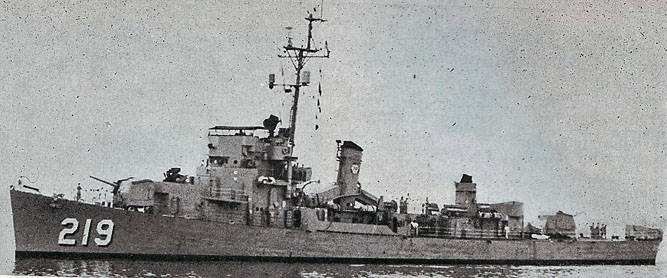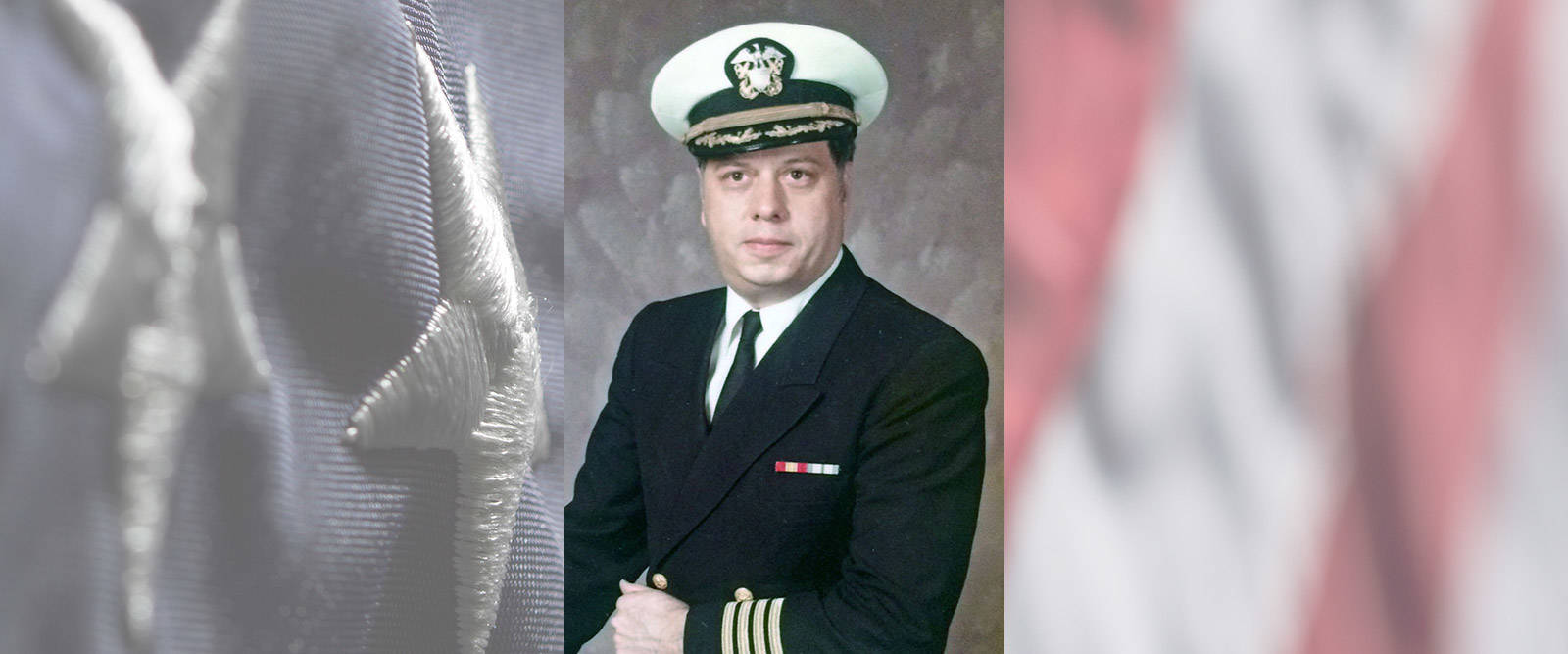U.S. Navy Korean War Riverside, IL Flight date: 05/09/18
By Christina Nichols, Honor Flight Chicago Veteran Interview Volunteer
John’s dad was a general contractor, so John learned a lot about the construction business from an early age. Starting from the time he was a teenager, he had an active role both in office and field management at his dad’s company. In the early 1950’s, he enrolled at the Illinois Institute of Technology (IIT), where he studied architecture under Mies van der Rohe and city planning under Ludwig Hilberseimer. While in college, he began his life in the military as part of the ROTC program. The only ROTC programs available at IIT were the Air Force or the Navy. He selected the Navy and went on to study naval ordnance, leadership, science and history. John received his commission as an Ensign upon graduation in the summer of 1954. He was assigned to the USS J. Douglas Blackwood (DE-219) as a Deck Officer. The Blackwood was a 306 foot combat vessel which operated out of Norfolk, VA-not quite the Mediterranean Sea that John had been hoping for, but he was content, nonetheless.
When John arrived in Norfolk to begin his active service, he discovered that his ship had already left for Galveston, TX. The ship alternated duty between Norfolk and the Fleet Sonar School at Key West, Florida. John made his way to Key West where he waited to be connected with his ship. Sonar technology was very important at this time and John really enjoyed learning more about it. He considered signing up for submarine duty but he “got talked out of it” by Lane Bonner, an Operations Officer. Lane told John that he had a good future in architecture and encouraged him to pursue that career when his two years of active duty were over. Submarine duty required an additional year of active military duty.
When he returned to the USS Blackwood, John was quickly promoted to First Lieutenant. In this role, he was in command of all the Petty Officers on deck and in the sonar room. John fondly remembers that he and his crew mates had to brave the cold winters in the North Atlantic seas; and then, during the hot summers, they would go down to the warm waters of the Caribbean Sea. John’s ship was on the water during two dangerous hurricanes. The first, Hurricane Hazel, a Category 4, was the deadliest and costliest hurricane of that year. It was a very scary ordeal and resulted in the ship being sent out from Norfolk to anchor in the Chesapeake Bay. Second, in 1955, Hurricane Diane occurred while they were on the Susquehanna River. Although weathering the second storm was not as harrowing as the first, Hurricane Diane was named the costliest hurricane in history in the Atlantic, leading to the retirement of the name “Diane” from the list of options for hurricanes.
John very much enjoyed his time in the military and was grateful to have served on the Blackwood, one of the fastest vessels of that time. One exception, John recalls, was the USS Nautilus. The Nautilus was the first operational nuclear-powered submarine in the world, which was capable of staying underwater indefinitely, as opposed to the traditional submarines. Although not as fast as the Nautilus, John’s vessel was much faster than a traditional submarine and John recalls being able to successfully “chase the Russians” in order to keep them a comfortable distance from our American shores.


John’s crew worked shifts of 4 hours on and 8 hours off. When not busy working his 4 hour shifts, he enjoyed movies with his friends and had other basic amenities provided to him from the Supply Officer. Not only does John have no regrets about his time in the military, he says, “He wouldn’t give up those years he spent in the Navy for anything.”
When John left active duty in the summer of 1956, he remained in the Navy Reserves and continued to pursue his goal of one day achieving the rank of Captain. With the GI Bill, John was able to pursue his Masters Degree in Architecture at IIT. While in the Reserves, John was an officer in the Seabees, where he commanded Seabee divisions at both Glenview Naval Air Station and the Great Lakes Naval Station. As part of the Construction Battalion, he managed a construction force of around five-hundred men. During this time, John and his men built roads and runways. They had additional responsibilities that included helping with clean-up and rescue activities and helping local area Boy Scouts. John retired in 1977 with 21 years of service in the military, three years after achieving the rank of Captain, U.S. Naval Reserves.
John values his time in the military as a great foundation for the rest of his life, providing him with strong leadership skills and an ability to work well with people. In his civilian life, he enjoyed working in the architectural field. Based on his experience as a regional and city planner, as well as background in transportation facilities, John was appointed to the Board of Directors of the RTA (Regional Transportation Authority) in 2011. He feels blessed to be married nearly 60 years; he has two daughters and two grandchildren. One grandchild designed a 3D model of the destroyer John was stationed on while in the Navy.
Since retiring from the Navy, John has traveled back to visit the areas where he served during the military. He was invited by then Treasurer of Illinois, Judy Baar Topinka, to the Norfolk area to witness the christening of the USS Ronald Reagan, a nuclear-powered supercarrier that was launched in 2001. It was the first ship ever to be named after a still living former president. Special moments like these have contributed fond memories for John of his time in the Navy.
John, we are grateful for your service and dedication. Enjoy your special day with Honor Flight Chicago!



